The development of sustained fusion energy is the keystone to a revolutionized future.
It is emphasized that all data and information presented here is taken from sources listed in the previous page
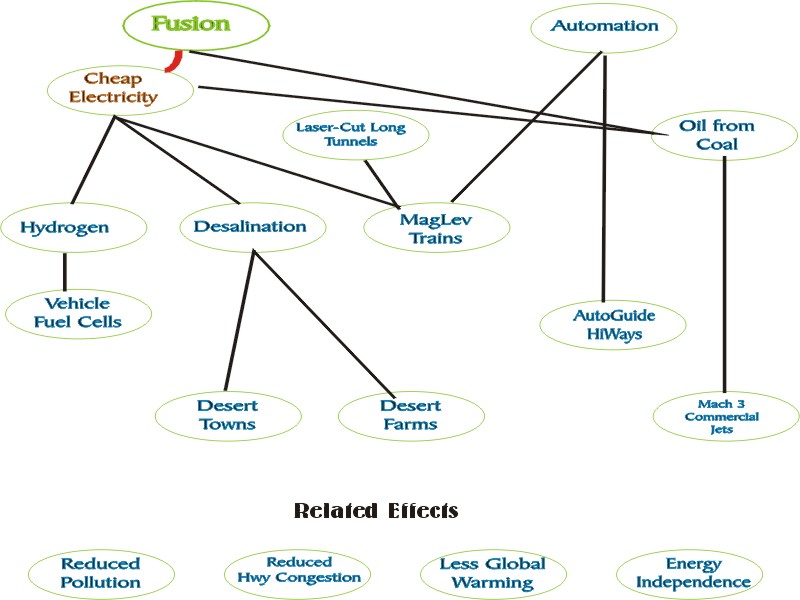
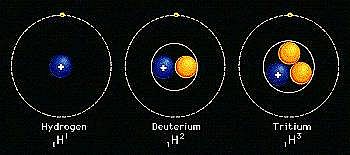
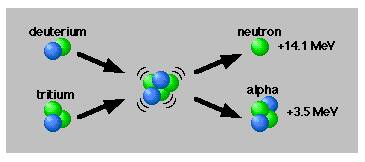
Fusion is what happens when two atomic nuclei are forced together by high pressure … high enough to overcome the strong repulsive forces of the respective protons in the nuclei. When the nuclei fuse, they form a new element, and release excess energy in the form of a fast-moving neutron. The energy is ‘extra’ because the mass of the newly formed nucleus is less than the sum of the masses of the original two nuclei; the extra mass is converted to energy according to Einstein’s equation E=mc2 This energy can be used to do useful work!
The most common type of fusion reaction discussed for fusion energy in the near future is the fusion of two hydrogen isotopes: deuterium (2H) and tritium (3H). It is the easiest fusion reaction to achieve on Earth, and will most likely be the type of reaction found in first generation fusion reactors. The actual reaction involves a deuterium nucleus fusing with a tritium nucleus to form an alpha particle (4He nucleus) and a neutron. The products contain around 17.6 million electron volts (MeV) of released kinetic energy through the loss of mass in the fusion process Even a very small mass can yield a considerable amount of energy. For example, if two 500 mg vitamin pills were completely converted to energy they would be sufficient to lift fifteen Lexus automobiles to the orbit of the moon!
Since the most practical nuclear fusion reaction for power generation seems to be the deuterium-tritium reaction, the sources of these fuels are important. The deuterium part of the fuel does not pose a great problem because about 1 part in 5000 of the hydrogen in sea water is deuterium. This amounts to over 10^15 tons of deuterium. Viewed as a potential fuel for a fusion reactor, a gallon of sea water could produce as much energy as 300 gallons of gasoline. The tritium part of the fuel is more problematic – there is no sizable natural source since tritium is radioactive with a half life of about 10 years. It would have to be obtained by breeding the tritium from lithium or gotten in the operation of the deuterium cycle.
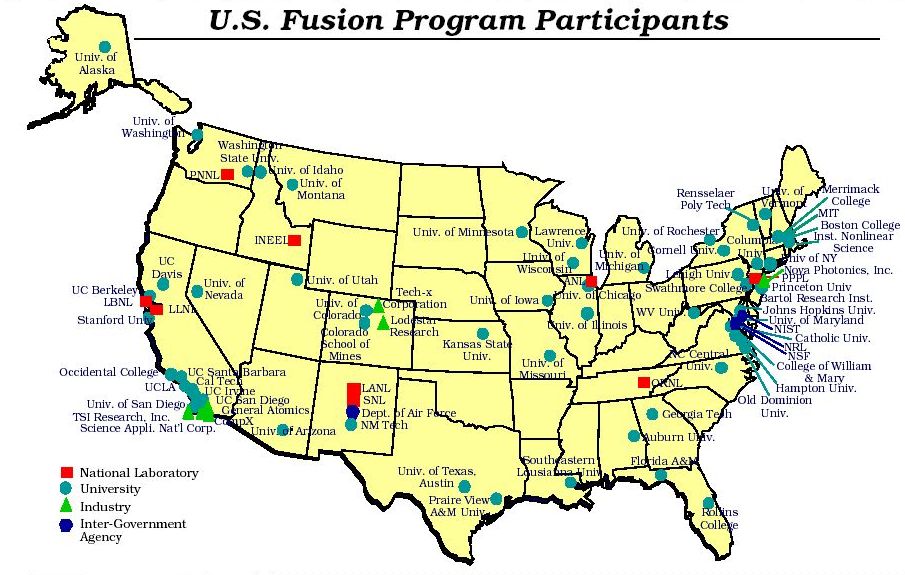
Experiment Results: Both inertial and magnetic confinement fusion research have focused on understanding plasma confinement and heating. This research has led to increases in plasma temperature, T, density, n, and energy confinement time, tau. Future power plants based on fusion reactors are expected to produce about 1 GW of power, which requires plasma parameters of n*tau ~ 2×1020 s/m3 and T ~ 120 million K.

Magnetic confinement fusion is one of the two current methods being researched for the containment of the plasma. Within these machines, magnetic fields are used to contain the charged particles that compose the hot plasma and keep it away from the chamber walls. This method is used for containing the plasma for a relatively long time at a low density.
The magnetic confinement device called the tokamak, is a word formed from the Russian words “TOroidalnaya KAmera ee MAgnitnaya Katushka,” or “Toroidal Chamber and Magnetic Coil”. Tokamaks were originally designed and used in Russia. In this design, the chamber is toroidal, or doughnut-shaped, thus having no open ends. The magnetic field is generated through the current running in the coils that are wrapped around the reactor. The field is stronger towards the center, causing the plasma to tend towards the outer wall. However, another magnetic field generated by a current going through the plasma itself combines with the coils’ magnetic field to create magnetic lines that spiral around the torus. This spiraling counteracts the drifting effect on the plasma because of the strong inner field, and effectively traps the plasma. The DIII-D tokamak fusion research program is carried out by General Atomics in La Jolla, California under contract to the US Department of Energy. The DIII-D facility is the second largest magnetic fusion facility in the US, with a replacement value of over $400 million. This is the 5th generation of innovative fusion experiments designed, engineered, assembled, and operated by GA. More than 200 people work at this facility with the focus of understanding and demonstrating fusion reactor relevant technology.
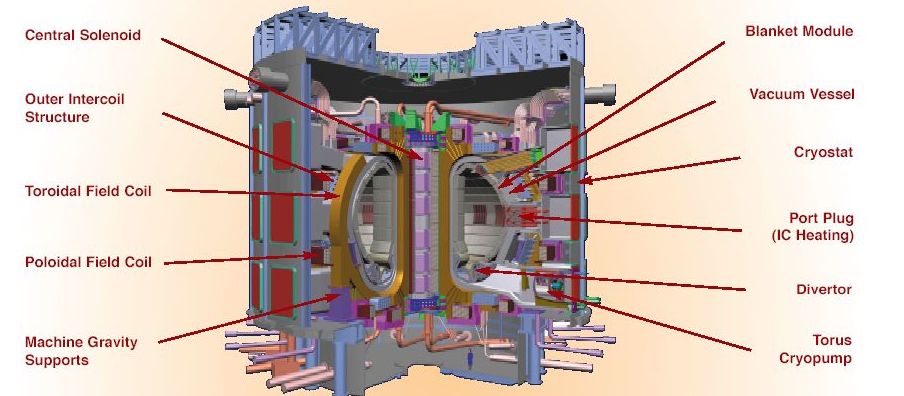
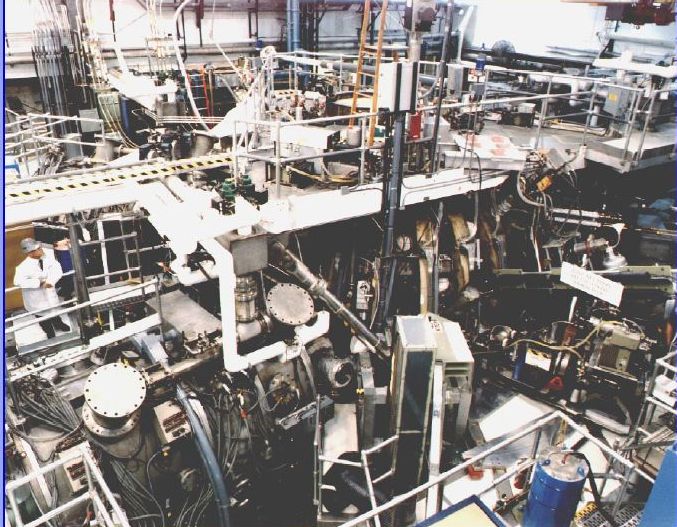
Inertial confinement is the other direction or research towards plasma confinement. This technique involves imploding a small fuel pellet (most likely a 50/50 mixture of deuterium and tritium). If it is compressed quickly and hard enough, temperature and density rise, allowing the reaction to reach or exceed the Lawson criterion. It is the inertia of the imploding pellet that keeps it confined momentarily. Because it is confined only by its own inertia, the plasma lasts for about one nanosecond. Therefore, to achieve breakeven point, a very large density is needed, usually around 1024 particles/cm3, which is many times more than lead.

Letter from Richard Hazeltine, Chair: Fusion Energy Sciences Advisory Committee to Dr. Ray Orbach, Director of Office of Sciences. U.S. Dept of Energy; dated 13 Sep 2002
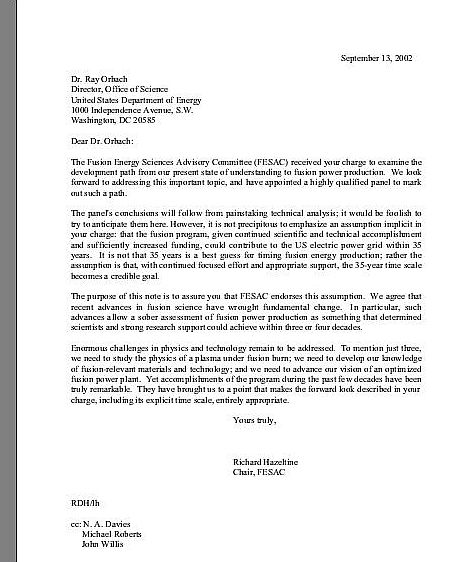 “…it is not precipitous to emphasize an assumption implicit in your charge: that the fusion program, given continued scientific and technical accomplishment and sufficiently increased funding, could contribute to the US electric power grid within 35 years. It is not that 35 years is a best guess for timing fusion energy production; rather the assumption is that, with continued focused effort and appropriate support, the 35-year time scale becomes a credible goal….”
“…it is not precipitous to emphasize an assumption implicit in your charge: that the fusion program, given continued scientific and technical accomplishment and sufficiently increased funding, could contribute to the US electric power grid within 35 years. It is not that 35 years is a best guess for timing fusion energy production; rather the assumption is that, with continued focused effort and appropriate support, the 35-year time scale becomes a credible goal….”